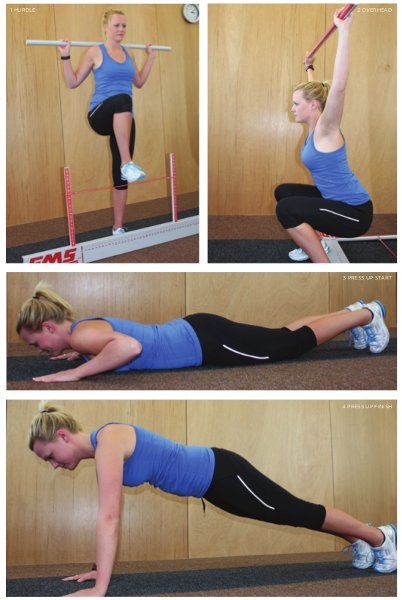Injury prevention and Performance Screening
Friday 25 October 2013, 12:33PM
By Ben Teusse
493 views
Screening assessments, particularly within the pre-season stage are becoming an increasingly utilised tool with elite athletes as part of an overall injury risk management strategy or as a performance enhancement aide.
Until recently there has been a focus on testing the individual components of joint range, muscle strength (power and endurance) and muscle flexibility.
These isolated tests are limited as they correlate poorly with functional activities.
Existing functional tests tend to be highly specific to a particular task or sporting skill and therefore often lack value when used across a wide range of individualised assessments.
The result is that these outcome measures and assessment tools have been relatively unsuccessful at predicting injury.
Research suggests that a previous history of injury is the most consistent and reliable predictor for future injury.
This would imply a flaw in current injury management.
It would appear that even when isolated clinical tests have become asymptomatic they are inadequate for both determining the end point of rehabilitation and for predicting injury recurrence.
To date screening programmes have been limited to health questionnaires to determine medical fitness for general cardiovascular exercise or return to sport following concussion.
The assessment of “real” function or the efficiency of multiple joints and muscles interacting during fundamental movement patterns can now be reliably assessed and measured.
The Functional Movement Screen (FMS) is comprised of 7 fundamental movement patterns requiring a balance of mobility and stability.
The athlete performs the following tests:
- Deep Squat
- In-line lunge
- Hurdle step
- Shoulder mobility (combined hand behind head and hand behind back)
- Active straight leg raise
- Trunk Stability push up
- Rotatory Stability
Each test involves a set of specific instructions and based on observations of pain, an inability to complete, compensatory movements, or a competent performance the athlete is scored from 0 to 3 with a maximum total score of 21.
American studies involving contact sports have indicated scores below 14 resulting in a 6 fold increase in injury occurrence.
The FMS has been shown to be highly reliable and easy to perform.
These tests place the athlete in extreme positions during which impairments in mobility or strength/stability become more apparent.
We have found many high performance athletes struggle to perform these relatively simple tests.
This would suggest they must be utilising compensatory and less efficient movement patterns which may contribute to injury as well as impair performance potential.
At Habit Physiotherapy we have found the FMS to be an invaluable tool to determine “weak links” within an athlete’s kinetic chain.
Using Kinesiocapture technology the athlete is instantly aware of their performance errors.
The video analysis and the FMS score allow performance to be monitored over time.
Kiesel et al (2011) has illustrated how the FMS can assist with exercise prescription as well as demonstrating how tailored exercise programmes can improve FMS scores.
So if you are in need of a new perspective with managing and preventing recurrent injuries as well as trying to identify that weak link which may be inhibiting your performance, a Functional Movement Screen may be the answer to your problems.
Habit Physiotherapy & Rehabilitation Clinics
Wellington | Auckland
www.habit.co.nz
